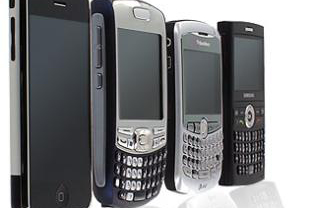
The Blue Light Project weirdly presages this extraordinary news story: WikiLeaks founder Julian Assange has told smartphone and email users “You’re all screwed”, as he unveiled his latest publications.
The 287 documents Wikileaks has released point to 150 agencies around the world that are making use of *existing technology* to monitor people’s phones and computers. Software and hardware to perform this “mass surveillance” is being sold by intelligence contractors around the world and allows for data collection targeted at “entire populations”.
That news is strange and scary enough. But in The Blue Light Project, the main character Rabbit has a very particular backstory. He used to work for a secretive company developing phone software. Here’s the relevant excerpt. Bear in mind that what’s being descibed in this passage was SciFi in my mind as I wrote it. But as I was writing about the very near future, it should perhaps be no surprise that the SciFi future was (at least according to Assange) happening already, only in the folds of secrecy that surround our present moment.
Excerpt from The Blue Light Project:
“Nobody was dying as a result of my work, I realize that,” Rabbit told Eve. “There were jobs at Raytheon and Intel where I could have worked on control systems for cluster bombs and joint stand-off weapons. I was working on a phone. I was helping design the newest, latest, hottest version of a device most people use to order pizza, text their friends.”
But what a phone. What an idea. From a technical standpoint, it had been fun to work on. Naturally it was also an internet device and a video camera and a GPS and a music player. And yes, the prototype was also designed with an integrated biometric fingerprint and retina scanner, so the device was useless if it was stolen, and it could also log user medical information like blood pressure, blood type, pulse rates, et cetera. But the fact that it could do all those things was secondary to the phone’s chief innovation, which was a function that would ultimately be invisible to its users.
“And what was that?”
“It listened to you,” Rabbit said.
Eve thought about that one for a second or two. “Don’t all phones listen to you?”
“Not actively,” Rabbit said. “They just transmit. And even so, they generally don’t transmit unless you’re on a call.”
Eve was trying to work this through. “The phone was designed to eavesdrop?”
User intelligence, they called it. Or sometimes: behavioral fingerprinting. The phone was designed to sample the life of its user: ambient noises, television shows on in the background, music choices. The system then synched that data up with all the other information collected—downloads, GPS logs, voice traffic, medical data—and built a user profile that allowed the device to assemble phone books or web links, push ads and suggestions at you through the browser, even dial 911 and transmit medical data in the case of certain medical emergencies.
“Which was maybe a little more phone than some people would want,” Rabbit said. But what was a lot stranger, what really got into Rabbit’s head and wouldn’t come out, was the client-side request late in the project timetable for silent dial-out functions.
“Silent what?” Eve asked.
Dial-out. These capabilities enabled the phone to upload user profile data to pre-set third-party locations.
“As in, without people knowing,” Eve said.
Rabbit shrugged. Conceivably without them knowing, yes. The phone could have been designed to do that. He, personally, never got that far with it.
“Because you realized all this would be completely illegal?” Eve asked.
“It wasn’t illegal to test it,” Rabbit told her. “We were designing a prototype. A feasibility study.”
MADDAM, the client called it. Massively Distributable Data Acquisitions Module. Rabbit didn’t remember thinking once about what the device might represent if half the country or half the world owned one until that late client request that upload features be developed. And if there was any chance Rabbit was going to get his head around that part, there was much less of a chance the following morning when a whole raft of new nondisclosure agreements were shipped over by the client’s lawyer to be signed immediately and returned. Rabbit signed. But why the paranoia? What exactly had they been working on?
“Maybe we really were just tossing around ideas for a super-smart phone,” Rabbit said. “But that morning I realized I just didn’t know. Maybe I was developing the most sophisticated low-maintenance wiretap the world had ever seen. Selling people stuff and surveillance have a big overlap, if you’re seeing my point here.”
“I am. And I’m scared to ask the next part,” Eve said.
Rabbit nodded. He knew where this all led if you thought about it.
“Who was the client?” Eve asked.
“Short answer?” Rabbit said. “Nobody I worked with had any idea. We used a code name in house. Blue 52.”
“Blue 52,” Eve said. “And who did you think that might be?”
*****
Please consider buying the book.

